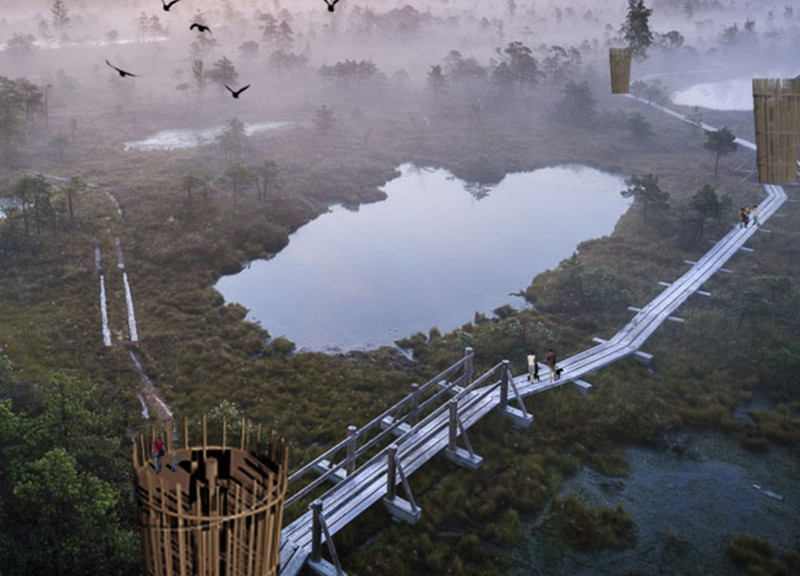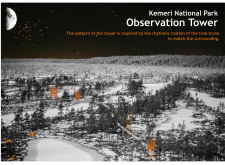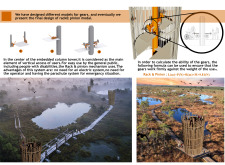5 key facts about this project
The primary function of the observation towers is to provide elevated viewpoints for visitors, enabling them to appreciate the rich biodiversity and striking scenery that defines the park. Each of the three towers is designed with varying heights, creating an engaging spatial experience that encourages exploration. This configuration allows for diverse perspectives, leading to a deeper connection between visitors and the surrounding environment.
The design ethos emphasizes a close relationship with nature. Inspired by the verticality and patterns found in the park's native trees, the architectural approach ensures that the structures harmonize with the natural context. The choice of materials plays a crucial role in this relationship. Wood is predominantly used throughout, lending warmth and sustainability to the project. Its selection is both practical and aesthetic, as it integrates seamlessly into the wooded landscape while supporting eco-friendly construction practices.
Accessibility is a significant consideration in the design of the observation towers. A rack and pinion mechanism is incorporated, making it easier for individuals with mobility challenges to experience the vantage points offered by the towers. This aspect of the design reflects a commitment to inclusivity, allowing all visitors to engage with the natural beauty of the park regardless of their physical capabilities.
The pathways connecting the observation towers are meticulously crafted, aimed at ensuring safe and enjoyable navigation through the park’s sensitive terrain. Created from timber, these paths echo the project's overall material palette and philosophy of blending human-made structures within the existing ecological framework.
One of the unique design approaches of this project is its emphasis on visitor interaction. By creating multiple viewpoints and pathways, the architects encourage not just passive observation but active engagement with the landscape. The varied heights of the towers provide distinct experiences, enhancing the opportunities for discovery and exploration while fostering a sense of adventure among visitors.
In addition to its aesthetic and functional achievements, the Kemeri National Park Observation Tower project exemplifies a model of responsible design. By utilizing local materials and adopting sustainable building practices, the project showcases an awareness of environmental stewardship that is increasingly crucial in modern architecture.
Readers interested in gaining further insights into this project are encouraged to explore the architectural plans, architectural sections, and architectural designs, which reveal the layers of thought and creativity behind this endeavor. The architectural ideas presented in this project contribute not only to the visitor experience but also to the broader discourse on the role of architecture in enhancing our interaction with the natural world.


























